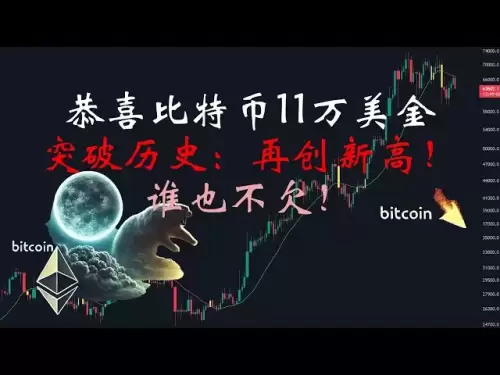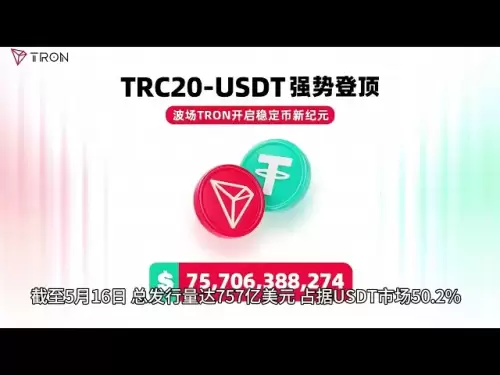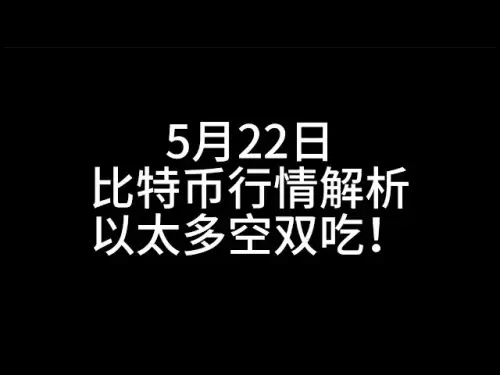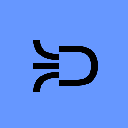-
 Bitcoin
Bitcoin $111,555.6411
4.71% -
 Ethereum
Ethereum $2,658.3113
4.71% -
 Tether USDt
Tether USDt $0.9998
-0.05% -
 XRP
XRP $2.4318
3.31% -
 BNB
BNB $687.2024
5.03% -
 Solana
Solana $178.6757
5.55% -
 USDC
USDC $0.9997
0.00% -
 Dogecoin
Dogecoin $0.2418
6.70% -
 Cardano
Cardano $0.8058
7.06% -
 TRON
TRON $0.2778
2.53% -
 Sui
Sui $3.9623
1.56% -
 Chainlink
Chainlink $16.5393
5.33% -
 Avalanche
Avalanche $25.2693
11.37% -
 Hyperliquid
Hyperliquid $30.8624
16.56% -
 Stellar
Stellar $0.3007
3.36% -
 Shiba Inu
Shiba Inu $0.0...01533
5.56% -
 Bitcoin Cash
Bitcoin Cash $433.5441
9.03% -
 Hedera
Hedera $0.2035
4.19% -
 UNUS SED LEO
UNUS SED LEO $8.8904
0.79% -
 Toncoin
Toncoin $3.1785
3.79% -
 Polkadot
Polkadot $4.9055
4.93% -
 Litecoin
Litecoin $98.9875
4.12% -
 Monero
Monero $404.4802
11.52% -
 Bitget Token
Bitget Token $5.2781
2.76% -
 Pepe
Pepe $0.0...01462
6.07% -
 Pi
Pi $0.8340
3.96% -
 Dai
Dai $0.9997
-0.02% -
 Ethena USDe
Ethena USDe $1.0002
-0.04% -
 Bittensor
Bittensor $470.1675
14.14% -
 Uniswap
Uniswap $6.4427
3.96%
Can BOLL and wave theory work together? How to use channels to determine wave types?
Bollinger Bands and Elliott Wave Theory can enhance trading by confirming wave patterns and market trends when used together.
May 22, 2025 at 10:42 am
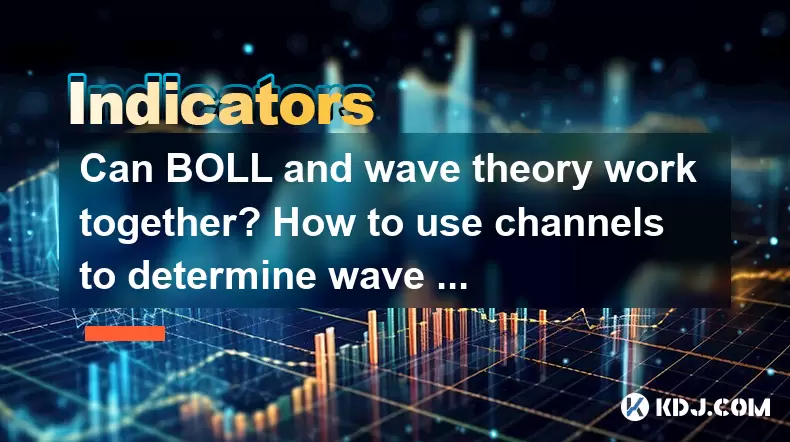
Introduction to BOLL and Wave Theory
The Bollinger Bands (BOLL) and Elliott Wave Theory are two popular analytical tools used within the cryptocurrency trading community. Bollinger Bands are a technical analysis tool developed by John Bollinger, designed to provide a relative definition of high and low prices of a market. On the other hand, Elliott Wave Theory is a method of technical analysis that traders use to analyze financial market cycles and forecast market trends by identifying extremes in investor psychology, highs and lows in prices, and other collective factors.
Understanding Bollinger Bands
Bollinger Bands consist of a middle band being an N-period simple moving average (SMA), an upper band at K times an N-period standard deviation above the middle band, and a lower band at K times an N-period standard deviation below the middle band. The standard setting for Bollinger Bands is a 20-day period and two standard deviations. These bands expand and contract based on the volatility of the price, providing traders with insights into potential overbought or oversold conditions.
Basics of Elliott Wave Theory
Elliott Wave Theory suggests that markets move in repetitive cycles, which are influenced by investors' psychology. These cycles are composed of impulsive waves and corrective waves. Impulsive waves move in the direction of the larger trend and consist of five smaller waves, while corrective waves move against the larger trend and are made up of three smaller waves. Identifying these waves helps traders predict future price movements.
Combining BOLL and Wave Theory
Combining Bollinger Bands with Elliott Wave Theory can provide traders with a more robust framework for analyzing market trends. When prices reach the upper Bollinger Band, it could indicate the end of an impulsive wave and the beginning of a corrective wave. Conversely, when prices hit the lower Bollinger Band, it might signal the completion of a corrective wave and the start of a new impulsive wave. By integrating these tools, traders can enhance their understanding of market dynamics and improve their trading strategies.
Using Channels to Determine Wave Types
Channels are another useful tool in technical analysis, particularly when determining wave types in Elliott Wave Theory. Channels are drawn parallel to the trend line connecting the highs or lows of the waves. There are two types of channels commonly used: parallel channels and expanding channels.
- Parallel Channels: These are drawn by connecting the highs and lows of the waves with parallel lines. In an uptrend, the channel will be drawn from the lows of wave 2 to the lows of wave 4, and from the highs of wave 1 to the highs of wave 3. In a downtrend, the channel will be drawn from the highs of wave 2 to the highs of wave 4, and from the lows of wave 1 to the lows of wave 3.
- Expanding Channels: These are drawn by connecting the highs and lows of the waves with lines that diverge. This type of channel is often used in corrective waves, where the price movement becomes more volatile.
Applying Channels to Identify Wave Types
To effectively use channels to determine wave types, follow these steps:
- Identify the trend: Determine whether the market is in an uptrend or a downtrend. This will help you decide which type of channel to use.
- Draw the trend line: Connect the lows of wave 2 and wave 4 in an uptrend, or the highs of wave 2 and wave 4 in a downtrend.
- Draw the parallel line: Draw a parallel line to the trend line, connecting the highs of wave 1 and wave 3 in an uptrend, or the lows of wave 1 and wave 3 in a downtrend.
- Analyze the price movement: Observe how the price interacts with the channel. If the price consistently touches the upper and lower boundaries of the channel, it confirms the validity of the channel and the identified wave types.
- Adjust the channel: If the price breaks out of the channel, adjust the channel accordingly to reflect the new trend or wave pattern.
Integrating BOLL with Channel Analysis
Combining Bollinger Bands with channel analysis can provide additional insights into wave types. When the price reaches the upper Bollinger Band and the upper boundary of the channel, it could indicate the end of an impulsive wave. Similarly, when the price hits the lower Bollinger Band and the lower boundary of the channel, it might signal the completion of a corrective wave. This integration helps traders confirm their wave analysis and make more informed trading decisions.
Practical Example of BOLL and Channel Analysis
Consider a hypothetical scenario where the price of a cryptocurrency is in an uptrend. The price has recently touched the upper Bollinger Band and the upper boundary of the parallel channel. This could indicate the end of wave 3 and the beginning of wave 4, a corrective wave. Traders can use this information to adjust their trading strategies, such as taking profits or preparing for a potential pullback.
Detailed Steps for Using BOLL and Channels in Trading
To effectively use Bollinger Bands and channels in your trading strategy, follow these detailed steps:
- Set up your charting software: Ensure that your charting software supports Bollinger Bands and allows you to draw custom channels.
- Apply Bollinger Bands: Add Bollinger Bands to your chart with the standard settings of a 20-day period and two standard deviations.
- Identify the trend: Use trend lines and other technical indicators to determine whether the market is in an uptrend or a downtrend.
- Draw the channel: Based on the trend, draw a parallel or expanding channel by connecting the appropriate highs and lows of the waves.
- Monitor price interactions: Observe how the price interacts with both the Bollinger Bands and the channel. Look for instances where the price touches the upper or lower Bollinger Band and the channel boundaries simultaneously.
- Confirm wave types: Use the interactions between the price, Bollinger Bands, and channels to confirm the wave types. For example, if the price touches the upper Bollinger Band and the upper channel boundary, it could confirm the end of an impulsive wave.
- Adjust your strategy: Based on your analysis, adjust your trading strategy accordingly. This might involve taking profits, entering new positions, or preparing for potential reversals.
Frequently Asked Questions
Q: Can Bollinger Bands be used to predict the exact start and end of Elliott waves?
A: While Bollinger Bands can provide insights into potential overbought or oversold conditions, they cannot predict the exact start and end of Elliott waves with precision. They are best used as a tool to confirm wave patterns and enhance the analysis provided by Elliott Wave Theory.
Q: Are there specific timeframes that work best when combining BOLL and Elliott Wave Theory?
A: The effectiveness of combining Bollinger Bands and Elliott Wave Theory can vary depending on the timeframe used. Shorter timeframes may provide more frequent signals but can be more prone to false positives. Longer timeframes may offer more reliable signals but could result in fewer trading opportunities. Traders should experiment with different timeframes to find what works best for their trading style.
Q: How can I improve my accuracy when using channels to determine wave types?
A: To improve accuracy when using channels to determine wave types, it's essential to practice and refine your skills over time. Additionally, consider using other technical indicators, such as Fibonacci retracements and RSI, to confirm your channel analysis. Regularly reviewing past trades and adjusting your approach based on what you learn can also enhance your accuracy.
Q: Can the same channel be used for both impulsive and corrective waves?
A: While the same channel can be used for both impulsive and corrective waves, it's often more effective to use different types of channels for each. Parallel channels are typically used for impulsive waves, while expanding channels are more suitable for corrective waves. This approach helps to better reflect the different price movements associated with each type of wave.
Disclaimer:info@kdj.com
The information provided is not trading advice. kdj.com does not assume any responsibility for any investments made based on the information provided in this article. Cryptocurrencies are highly volatile and it is highly recommended that you invest with caution after thorough research!
If you believe that the content used on this website infringes your copyright, please contact us immediately (info@kdj.com) and we will delete it promptly.
- VeChain (VET) Price Reclaims $0.030 and Signals a Potential Breakout Rally to the $0.060 Level
- 2025-05-22 20:30:13
- Dubai Officially Legalizes Real-World Asset Tokenization
- 2025-05-22 20:30:13
- Bitcoin Solaris (BTC-S): The Next Evolution of Bitcoin Is Here
- 2025-05-22 20:25:13
- As XRP Ledger (XRPL) Gains Global Attention, XenDex Is the Project to Watch
- 2025-05-22 20:25:13
- Solana (SOL) Rallies Toward $200, Targeting $220 Resistance as Bitcoin Remains Range-Bound
- 2025-05-22 20:20:13
- Ember Sword shuts down despite raising millions, highlighting the volatile nature of Web3 gaming projects.
- 2025-05-22 20:20:13
Related knowledge
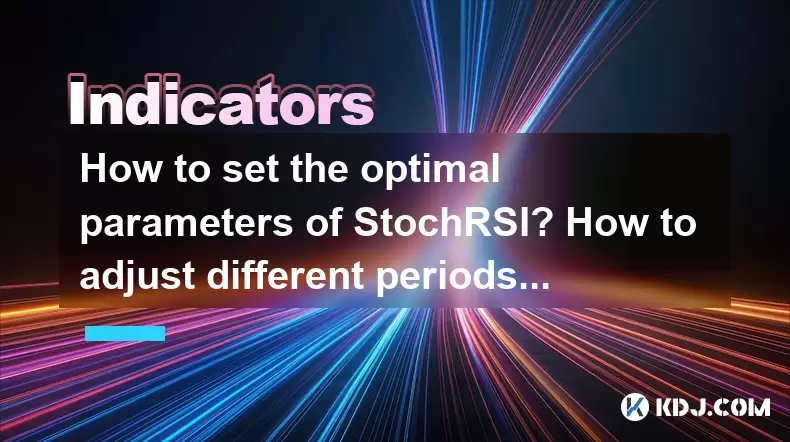
How to set the optimal parameters of StochRSI? How to adjust different periods?
May 22,2025 at 08:42pm
Understanding StochRSI and Its ImportanceThe Stochastic RSI (StochRSI) is a technical indicator that combines the concepts of the Stochastic Oscillator and the Relative Strength Index (RSI). It is used to identify potential overbought and oversold conditions in the market, which can help traders make more informed decisions. The StochRSI is particularly...
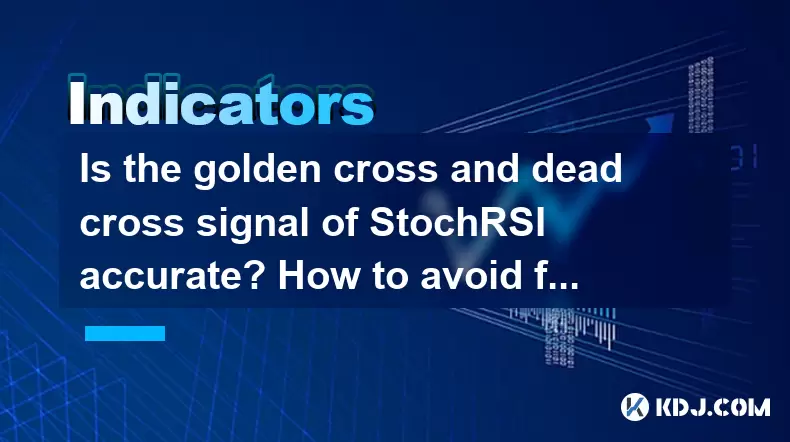
Is the golden cross and dead cross signal of StochRSI accurate? How to avoid false signal interference?
May 22,2025 at 06:49pm
The golden cross and dead cross signals generated by the Stochastic RSI (StochRSI) are popular tools used by traders within the cryptocurrency market to identify potential buy and sell opportunities. The StochRSI is a momentum oscillator that ranges between 0 and 1, and it's derived from the Relative Strength Index (RSI). Understanding the accuracy of t...
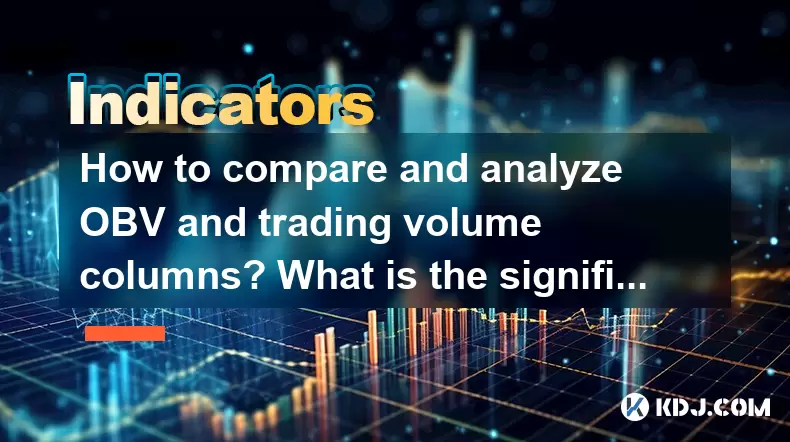
How to compare and analyze OBV and trading volume columns? What is the significance of the changes in red and green columns?
May 22,2025 at 07:35pm
In the cryptocurrency trading world, understanding and analyzing the On-Balance Volume (OBV) and trading volume columns is crucial for making informed decisions. Both indicators provide valuable insights into market trends and potential price movements. In this article, we will delve into how to compare and analyze OBV and trading volume columns, and di...
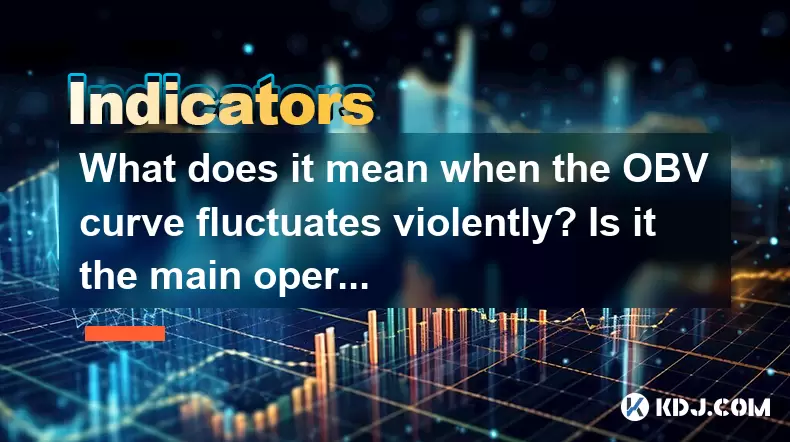
What does it mean when the OBV curve fluctuates violently? Is it the main operator or noise interference?
May 22,2025 at 03:57pm
The On-Balance Volume (OBV) indicator is a popular technical analysis tool used by traders and investors within the cryptocurrency market to predict price movements based on volume changes. When the OBV curve fluctuates violently, it raises questions about the underlying causes and the implications for trading strategies. In this article, we will explor...
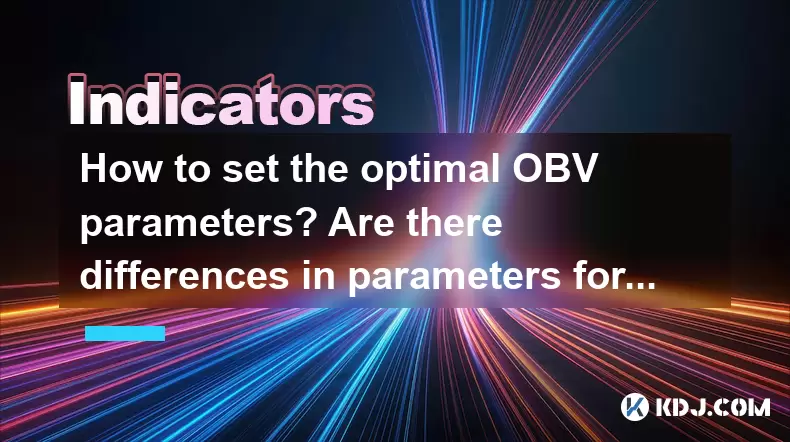
How to set the optimal OBV parameters? Are there differences in parameters for different cycles?
May 22,2025 at 04:21pm
The On-Balance Volume (OBV) indicator is a popular technical analysis tool used by cryptocurrency traders to predict price movements based on volume flow. Setting the optimal OBV parameters is crucial for maximizing the effectiveness of this indicator. This article will delve into how to set these parameters and whether they should be adjusted for diffe...
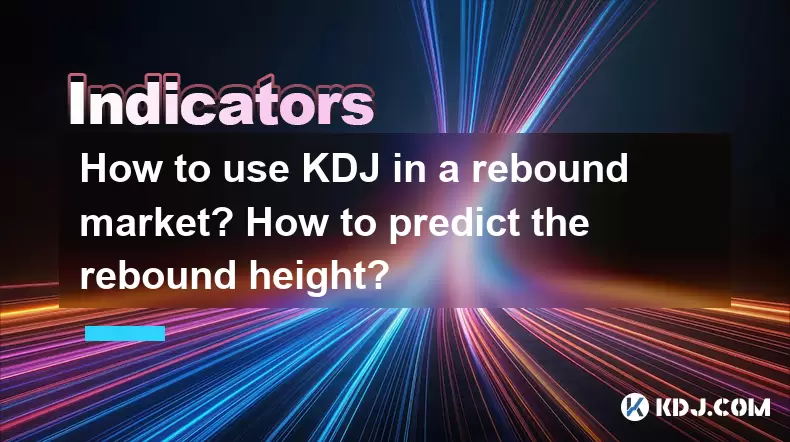
How to use KDJ in a rebound market? How to predict the rebound height?
May 22,2025 at 07:14pm
How to Use KDJ in a Rebound Market? How to Predict the Rebound Height? The KDJ indicator, also known as the Stochastic Oscillator, is a popular technical analysis tool used by traders to identify potential reversals in the market. In a rebound market, understanding how to effectively use the KDJ indicator can be crucial for making informed trading decis...

How to set the optimal parameters of StochRSI? How to adjust different periods?
May 22,2025 at 08:42pm
Understanding StochRSI and Its ImportanceThe Stochastic RSI (StochRSI) is a technical indicator that combines the concepts of the Stochastic Oscillator and the Relative Strength Index (RSI). It is used to identify potential overbought and oversold conditions in the market, which can help traders make more informed decisions. The StochRSI is particularly...

Is the golden cross and dead cross signal of StochRSI accurate? How to avoid false signal interference?
May 22,2025 at 06:49pm
The golden cross and dead cross signals generated by the Stochastic RSI (StochRSI) are popular tools used by traders within the cryptocurrency market to identify potential buy and sell opportunities. The StochRSI is a momentum oscillator that ranges between 0 and 1, and it's derived from the Relative Strength Index (RSI). Understanding the accuracy of t...

How to compare and analyze OBV and trading volume columns? What is the significance of the changes in red and green columns?
May 22,2025 at 07:35pm
In the cryptocurrency trading world, understanding and analyzing the On-Balance Volume (OBV) and trading volume columns is crucial for making informed decisions. Both indicators provide valuable insights into market trends and potential price movements. In this article, we will delve into how to compare and analyze OBV and trading volume columns, and di...

What does it mean when the OBV curve fluctuates violently? Is it the main operator or noise interference?
May 22,2025 at 03:57pm
The On-Balance Volume (OBV) indicator is a popular technical analysis tool used by traders and investors within the cryptocurrency market to predict price movements based on volume changes. When the OBV curve fluctuates violently, it raises questions about the underlying causes and the implications for trading strategies. In this article, we will explor...

How to set the optimal OBV parameters? Are there differences in parameters for different cycles?
May 22,2025 at 04:21pm
The On-Balance Volume (OBV) indicator is a popular technical analysis tool used by cryptocurrency traders to predict price movements based on volume flow. Setting the optimal OBV parameters is crucial for maximizing the effectiveness of this indicator. This article will delve into how to set these parameters and whether they should be adjusted for diffe...

How to use KDJ in a rebound market? How to predict the rebound height?
May 22,2025 at 07:14pm
How to Use KDJ in a Rebound Market? How to Predict the Rebound Height? The KDJ indicator, also known as the Stochastic Oscillator, is a popular technical analysis tool used by traders to identify potential reversals in the market. In a rebound market, understanding how to effectively use the KDJ indicator can be crucial for making informed trading decis...
See all articles























